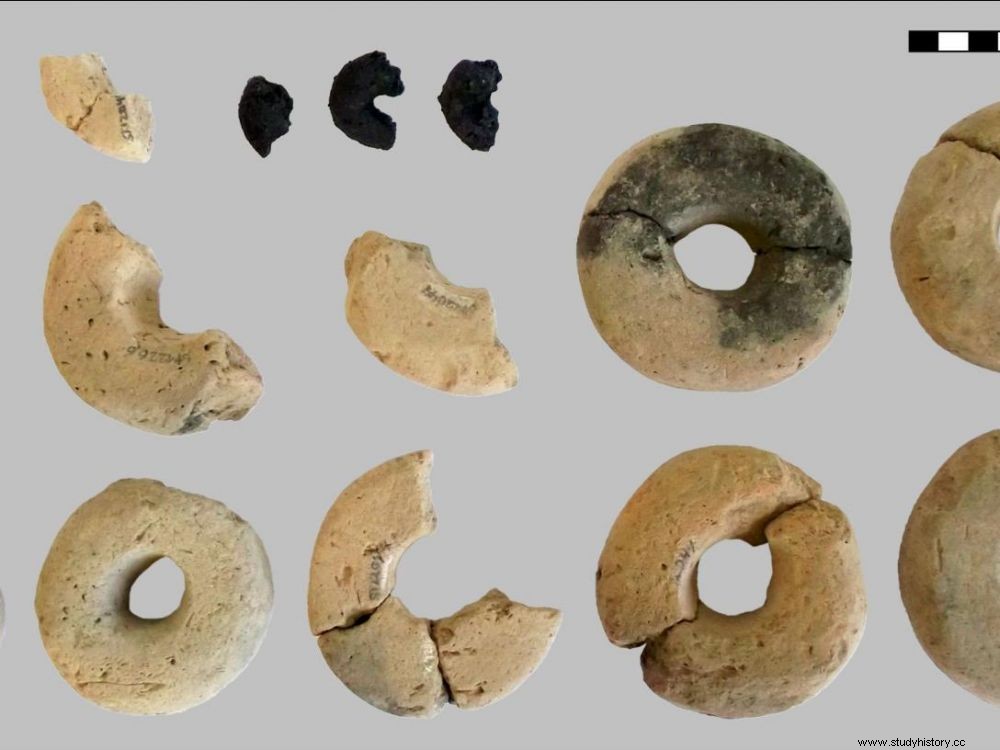These rings made of cereals were probably not intended for consumption.

These rings made of cereals were discovered in Austria.
They look strangely like Tarelli, these Italian biscuits in the shape of rings. But these artefacts were probably only used for the snack of the children of the site of Stillfried an der March, a small Austrian town. In any case, this is the opinion of the team who discovered them in a colony which was a place of storage of cereals, in the Bronze Age.
High quality flour
The history of agricultural practices is rather well known, thanks in particular to the analysis of the multiple tools intended for cultivation found almost everywhere in the world. On the other hand, it is more difficult to get an idea of the fashionable cooking recipes at a given time, the foods not being preserved or poorly preserved over time. These rings dating from 900 to 1000 years BC and found in grain storage pits therefore immediately challenged Andreas G. Heiss, of the Australian Archaeological Institute. They are indeed made of wheat and barley dough and look like they were made with high quality flour and then shaped with a mixture of moist cereals which then dried without cooking.
Prehistoric bakers with varied activities
Their appearance and composition differ greatly from other food remains discovered on the site. Also the scientists who have analyzed them and who publish their report in the journal Public Library of Science believe they were probably not made to be eaten as common food. Moreover, they strangely resemble the clay rings used as weights in the looms found in the same pits. The authors suggest that these cereal rings may have had a symbolic role or may have been designed for an unknown ritual. Proof that "prehistoric bakers produced much more than bread "explains Andreas G. Heiss in a press release. He hopes to find other artefacts of the same type in order to determine their function more precisely.
